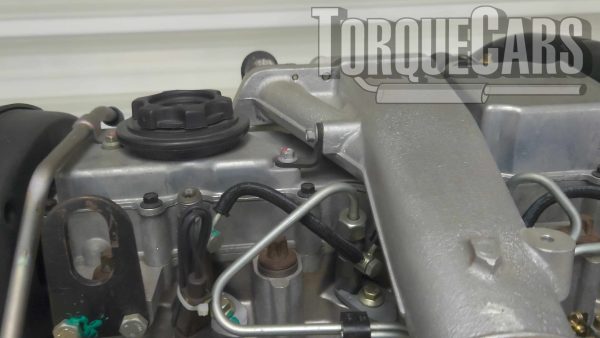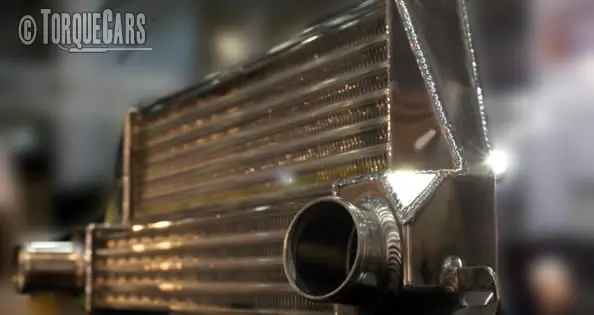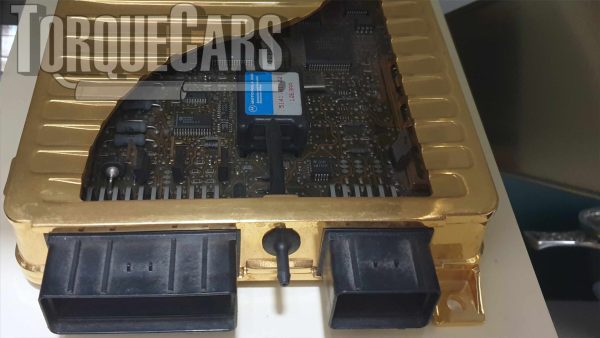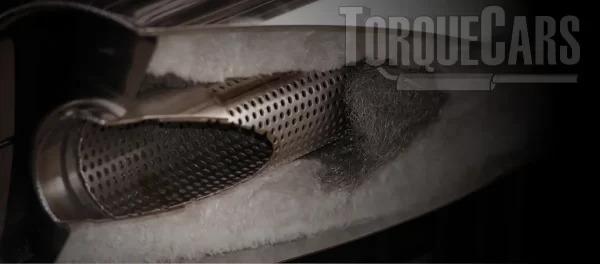Rover L Series Diesel Tuning Guide.
"Upgrading and Tuning the Rover L Series Engine"
If you're a Rover enthusiast or just love tinkering with engines, the Rover L series is a gem worth exploring. Born on 28 November 1994, this engine marked a significant milestone as the first Rover designed and manufactured to utilize Bosch fuel-injection equipment.
These are not popular engines, but we were asked by a viewer for a guide and it provides some insights into tuning older diesel engines. The ECU cannot be easily tuned, there is no common rail fuel injection, many features of the engine rely on mechanical rather then complex electronic controls.
Let's dive into the details and explore the different versions of the L series engine, along with potential upgrades and tuning options.
The power output for the original L series was 84–114 bhp

As the original MG Rover company no longer exist it can make mods & upgrades a challenge as these models are quite rare, and replacement parts can be difficult to source.
I had a Rover 200 back in the 2000's which I loved, and it was the first car I modified and tuned. In this article I'll pass on my knowledge and tips, but I would appreciate any updates or suggestions you can provide.
A lot happens in 20 years in the car world and because I've not had one of these to play with recently I don't doubt I may have a few holes in my knowledge which I'll share with others on this page based on your feedback.
Rover L Series Evolution
Rover Cars initially kicked off production in a limited capacity at Longbridge, focusing on the Rover 600. Later, higher volume production shifted to Solihull, catering to a broader range of applications.
Early L series units were used in the Austin Montego & Maestro and in the popular Sherpa van.
These engines found their homes in various models, including the Land Rover Freelander, Rover 200 Mk3, Rover 400 Mk2, Rover 600, and European versions of the Honda Accord and Honda Civic.
Unfortunately, MG Rover's decline occurred just as they were working on a common rail version of the engine, leading to the development of the G series, a 16V common rail engine born from this evolutionary process.
1. Early Days: Non-Intercooled and Mechanical Control
The initial L series engines featured a non-intercooled, mechanically controlled fuel-injection system. These models, found in Rover 200 and Rover 400, lacked an intercooler and used a unique intake manifold.
The turbo in these engines was I believe the GT1549, providing a solid performance foundation and good power gains when tuned.

2. Intercooled and Electronically Controlled
As the L series evolved, intercooled versions with electronically controlled fuel injection came into play.
Models like the Rover 200, Rover 400, and Rover 600 received these upgrades, denoted by the "Di" in their model designation.
The addition of the VP37 and a servo-controlled fuel pump marked advancements, though the turbo remained a GT1549 unit. These generally provide better gains when tuned, but obviously this depends on your budget and the mods you choose.
3. The Latest Advancements: VP30 Pump and Improved Turbo
The most recent iterations of the L series engine boast intercooling and an electronically controlled VP30 pump-driven injection system. (Di models used the VP37)
This more advanced setup produces increased torque while maintaining the same power output.
Cars like the Rover 25, Rover 45, MG ZR, and MG ZS house this version, with a revised turbo often referred to as GT1549S due to further improvements in the compressor wheel.
The AlliedSignal badged turbo which is a GT15 turbocharger worked well on the L series, it is optimized for smaller engines and provides boost to support power figures of 100-150hp.
These engines give the best power gains but it is possible to swap components between most of the L series engines to create a better base to work from.
Engine Blocks and Compatibility
While the engine blocks remain similar across generations, swapping the Freelander SDi can be challenging due to varying design elements. The two-stage fuel injection and ECU controlling fuel and timing play a crucial role in optimizing performance for most models.
Land Rover Td5 Engine Comparison
For those intrigued by the Land Rover Td5 engine, it's worth noting its similarities with the L series.
Both share bore/stroke dimensions, using the same pistons, connecting rods, and crankshaft dimensions.
However, the Td5 distinguishes itself with Lucas electronic unit injection, a through-flow cylinder head, and different ancillary equipment layout better suited to the Land Rover Chassis.
Glow Plug Variations
Finally, keep an eye on glow plug configurations. Some L series versions sport three glow plugs, while others have four, with the later VP30-driven engines typically featuring four, though exceptions exist.
The glow plugs primarily affected warm up emissions levels and did not have an impact on performance, or indeed starting ability in the UK.
In conclusion, the Rover L series engine offers a rich history of evolution and performance enhancements.
Whether you're looking to upgrade the turbo, fine-tune fuel injection, or explore compatibility with other Rover models, the L series provides ample opportunities for enthusiasts to enhance their driving experience.
L Series Mods & Upgrades
Add intercooler if you don't have one. The stock intercooler is good enough for 150hp, but you'll start to get heat soak affecting your power above this level.
Mapping Tuning The L Series ECU
Rover ECU's (MEMS Modular Engine Management System) are challenging (if not impossible via OBD port) to map without specialist knowledge and equipment as you'll usually need to open it up and replace the chip. In some cases the chips can be rewritten via direct connections, but a bench flash setup is usually more practical or rechipping them.

On the MEMS unit there are two 28 pin chips that contain the tune/maps, (marked 27C256) the smaller 93C46 units are 8 pin chips and contain the immobiliser codes. If you put in a new ECU it will typically require these 8 pin chips to be physically moved to the new unit or the new unit to be coded to your system.
The immobiliser is often a sticking point but there are ways to bypass this getting the ECU to ignore the immobiliser inputs.
As the original MG Rover car company no longer exist it can be a challenge to get the information and spec you'll need. There are a few specialists out there who can provide proper ECU tunes.
Piggyback ecus are the way forward and for most are good compromise between a full ecu tune and still give decent power gains. SYNERGY / Rover Ron TU1 were popular brands back in the day when I had my Rover 200.
Chips can help lift power, primarily by increasing the fuel, so for 150 aims this would need a decent intake cone filter setup and a front mounted intercooler. At the 140hp point you will start to get soot & smoke especially if you've swapped to higher flowing injectors.
You can fool the ECU into dumping more fuel via a dial resistor that alters the readings to the ECU causing it to over fuel. It is crude and will produce more soot if not done properly but will usually result in a power gain. A tuning box pretty much does the same thing but it has more graduated control over the lie that goes to the ECU. Beware, some tuning boxes are just a resistor and will cause more problems than they are worth.
Exhaust
Decats where legal are good upgrades with a quoted gain of around 5hp on stock systems with an optimally sized 63mm pipe. Beware of small budget pipes, they can in many cases add a restriction.
EGR will require cleaning from time to time and is blamed for many problems but they generally won't get in the way of performance and on the L series are pretty robust and reliable.

Fuel Upgrades
Fuel pressure on the VP30 units was around 1,410 bar so you can push the stock turbos fairly easily to 150hp and a little more in some cases. At 160hp you should think about fuel pump and injector upgrades.
The mechanical fuel pumps used on the non intercooled engines will typically struggle to hit 130hp without some adjustment. They can be tweaked slightly to provide more fuel via a screw on the top but you need to know what you are doing.
The fuel tank lift pump will generally be quite happy to reach around 130hp, so even though the injectors are capable of going further.
Cams
Off the shelf cams do not exist when I last looked for the L series, but for those wanting to push power to the max the overlap/duration and lift offered are helpful.
Piper and Kent Cams or a similar camshaft professional in your area should be able to regrind the stock cam for you to suit your engines requirements and fully release your power aspirations.
"Hacking" the boost
By manually adjusting the turbo actuator (the length) one can achieve around 18-19psi of boost (the sweet spot on the L Series), but I strongly recommend you fit a proper boost gauge so you can see what is happening, high boost will ruin your turbo and can damage the engine.
L series intake upgrades
Panel filters are good for 130hp as the standard intake setup actually works quite well but over this level you are looking at an induction kit otherwise you'll be missing a bit of top end power.
The ribbed pipe between the turbo and the airbox can slow up airflow and we have seen improved spool up and throttle response switching to a silicone pipe.
Going beyond 130hp things start to get a little more complex and expensive.
At 150hp transmission will start to complain along with the clutch. Porting the inlet will help thanks to the fairly rough casting and manufacturing. For these power figures you'll need to do a turbo upgrade and this should push you to the 150-175hp regions.
These can be quite a challenge to track down now, but I'm sure there are still a few options around, let us know in the comments if you know of any sources.
You might also pay attention to the rough casting, internally the turbo housing, manifolds and inside the head would all benefit by being improved.
This is a specialist area but for the max power it is certainly worth considering having this done.
Further power gains are prohibitively expensive, big turbos, custom cam profiles, fully ported and flowed head. They are not impossible on the L series but you have to take into account the cost and complexity of these mods before you start out.
Please Check out my YouTube channel, we're regularly adding new content...
PLEASE HELP: I NEED YOUR DONATIONS TO COVER THE COSTS OF RUNNING THIS SITE AND KEEP IT RUNNING. I do not charge you to access this website and it saves most TorqueCars readers $100's each year - but we are NON PROFIT and not even covering our costs. To keep us running PLEASE Donate here
If you liked this page please share it with your friends, drop a link to it in your favourite forum or use the bookmarking options to save it to your social media profile.
Feedback - What do You Think?
Please use our forums if you wish to ask a tuning question, and please note we do not sell parts or services, we are just an online magazine.
Help us improve, leave a suggestion or tip
Please watch this video and subscribe to my YouTube channel.

 Click to accept YouTube Cookies & Play.
Click to accept YouTube Cookies & Play.